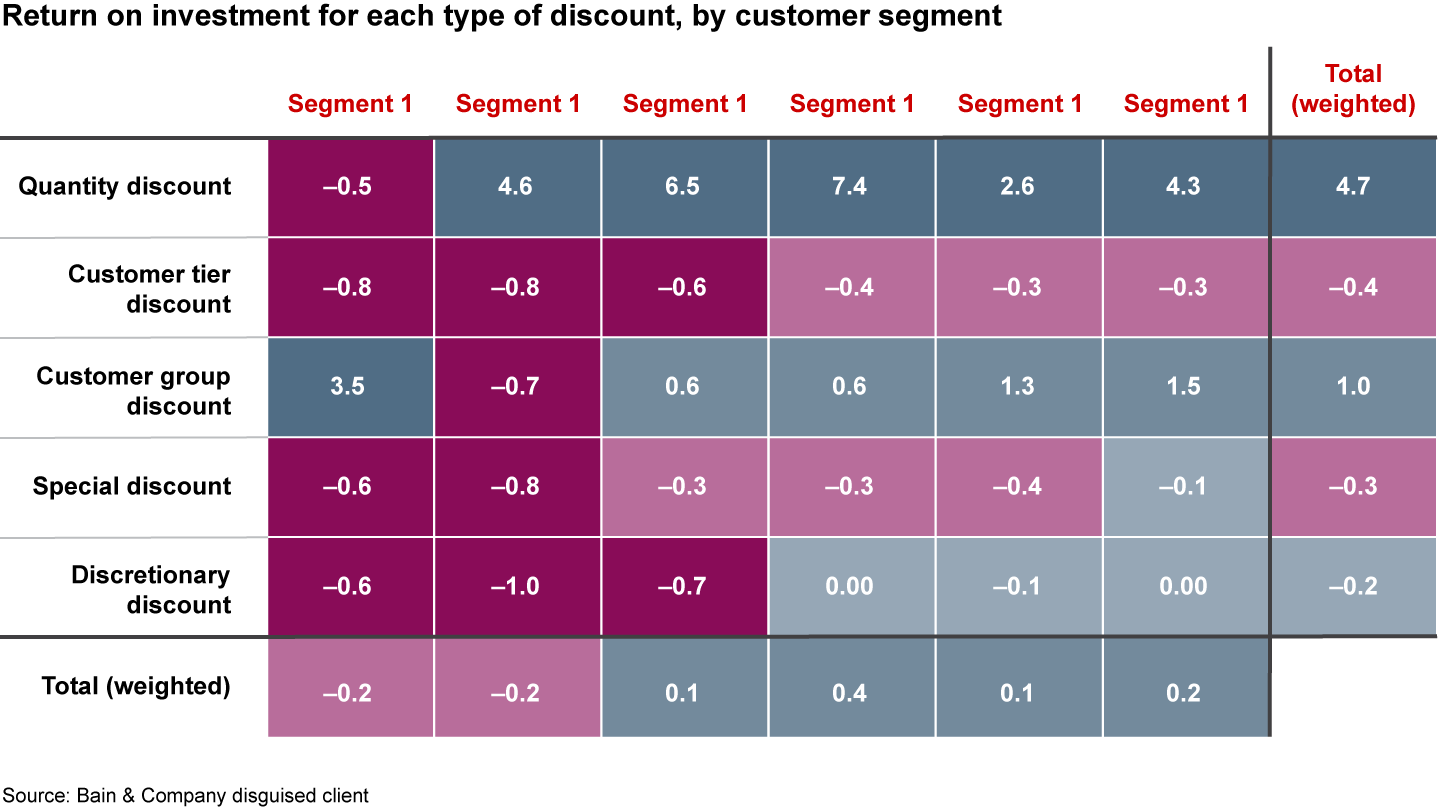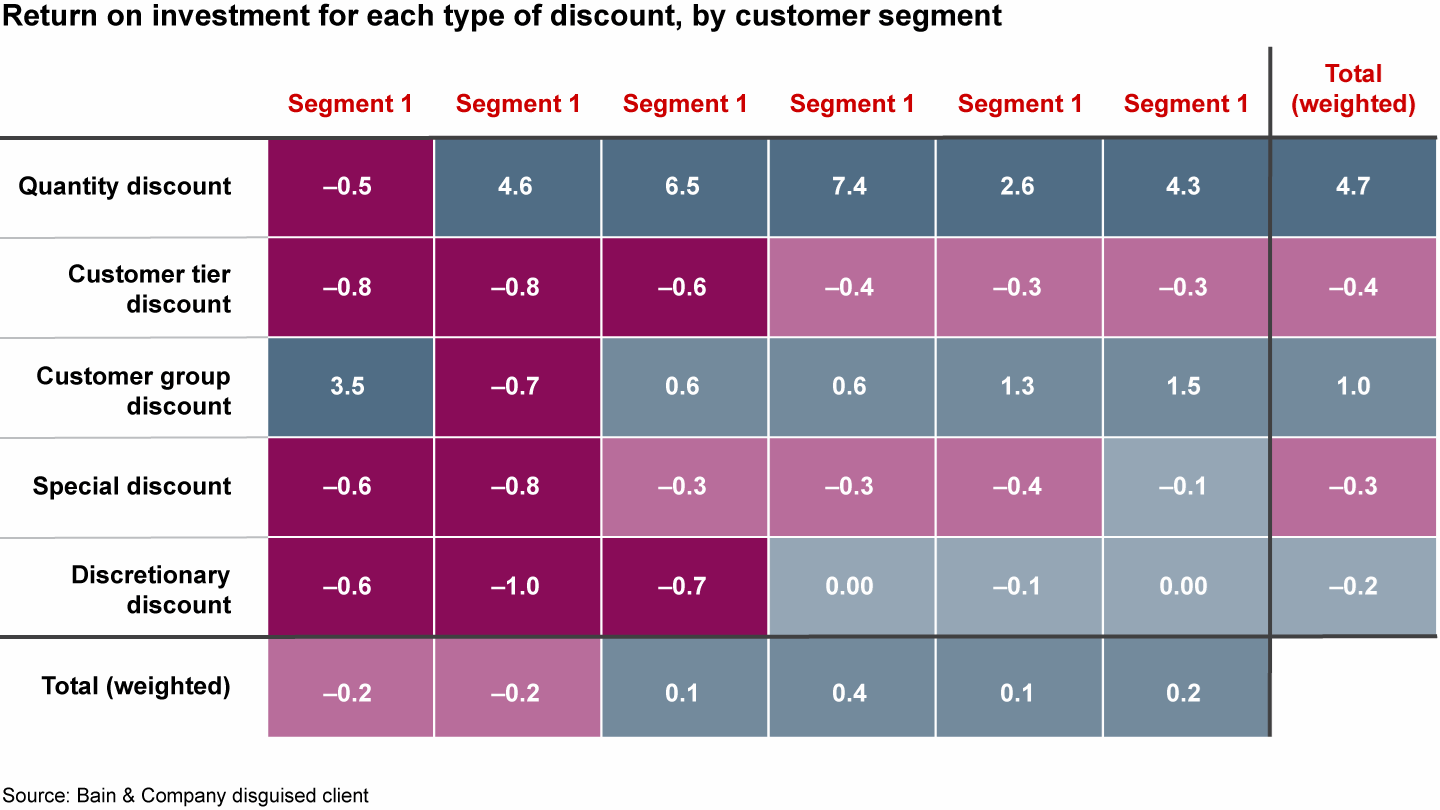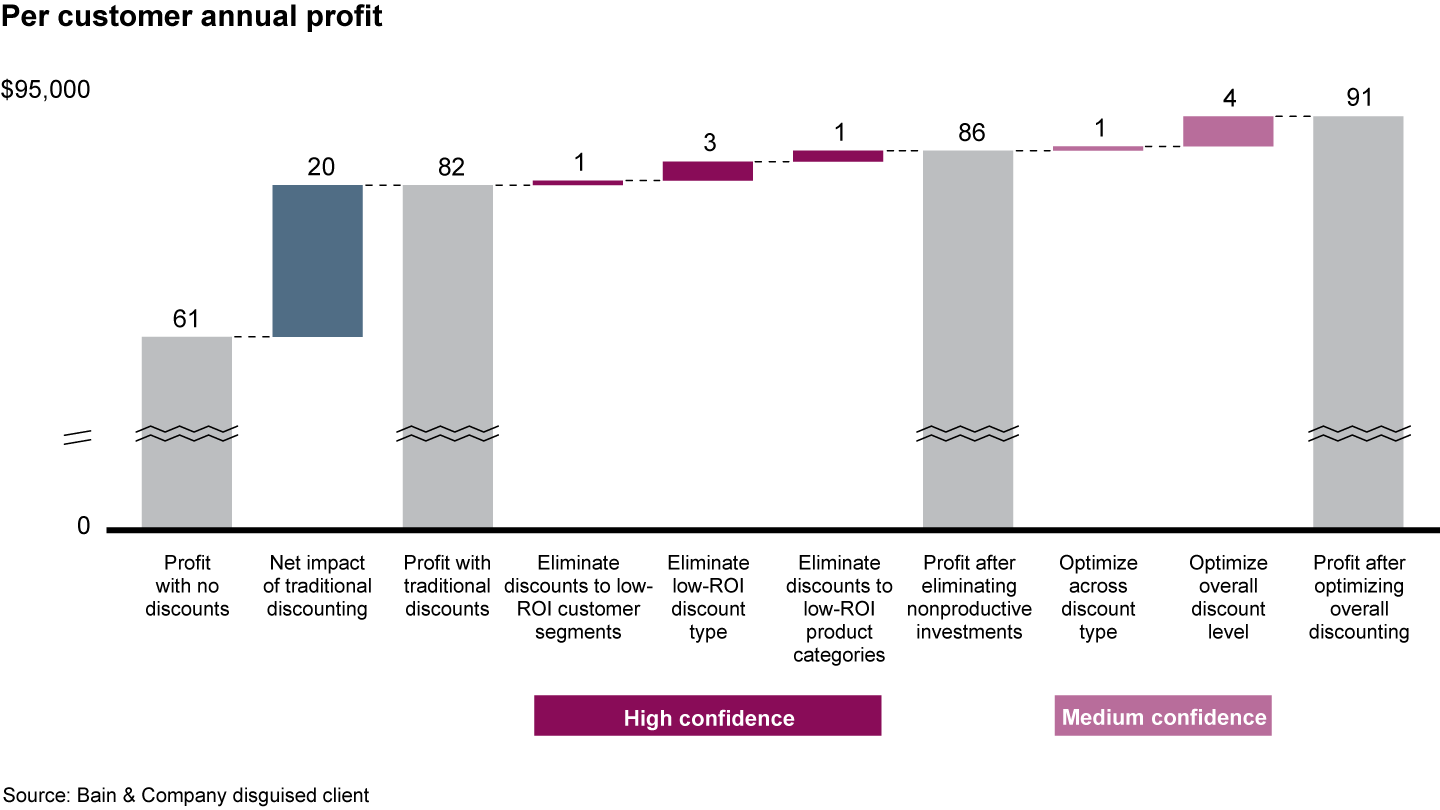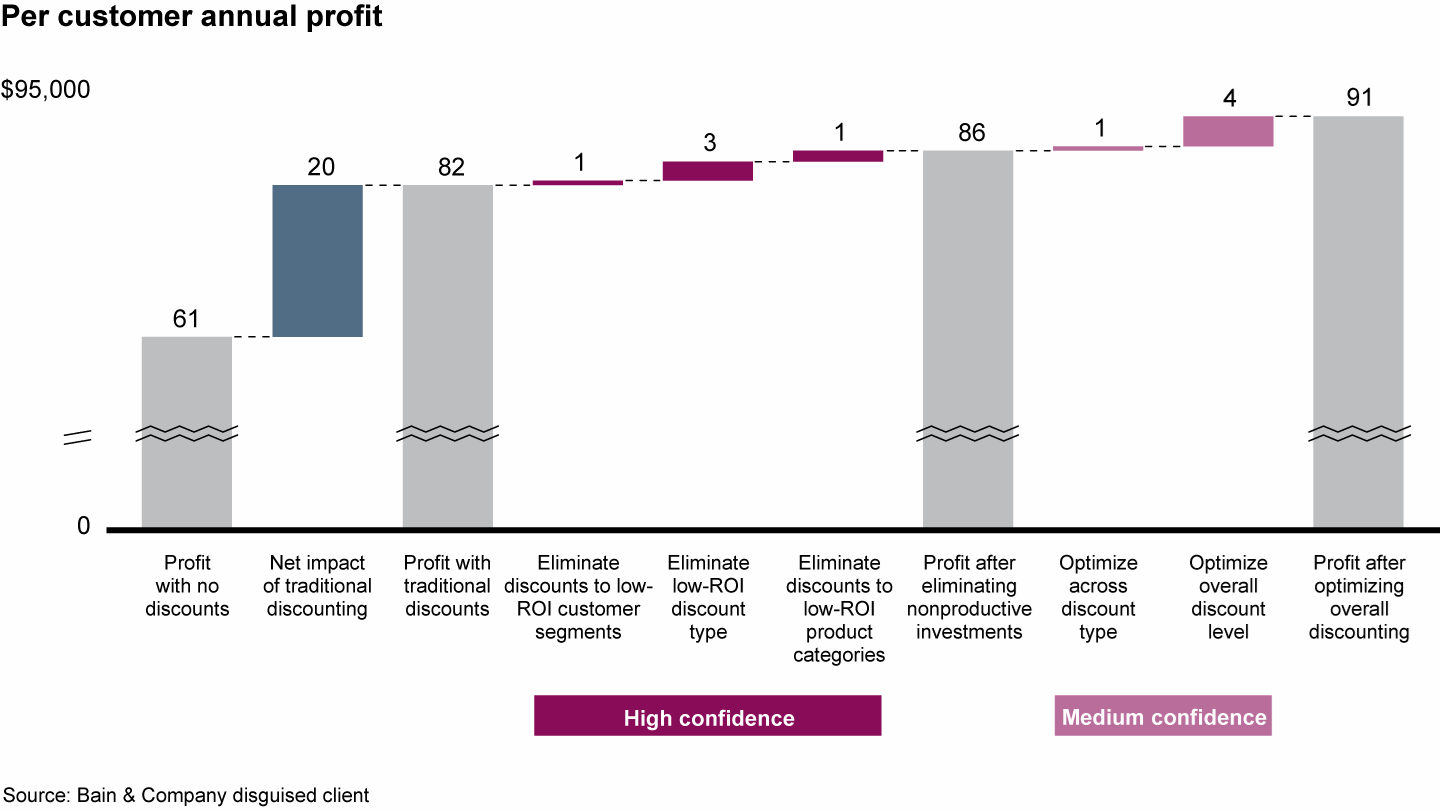Brief

Promotions and discounts are a staple of consumer markets. Some are designed by retailers and manufacturers to motivate people to buy products now rather than delaying, others to lower price without eroding a brand’s image.
Business-to-business companies make similar investments as well. For them, however, the transactions are more complicated and the levers more varied, making the link between investment and customer behavior difficult to tease out.
For instance, which is more effective for a consumer packaged goods company—an up-front discount for the retailer, or a back-end rebate based on volume? Do in-store displays create incremental demand or merely shift the same demand forward? Most B2B companies don’t have good data to arrive at a reliable answer. In our experience, almost one-third of discounts and other forms of investment in customers are wasted.
Stopping the leakage of revenues due to suboptimal, expensive customer investments has value at any time. But it’s especially critical in light of the economic crisis now unfolding as the coronavirus and subsequent lockdowns quickly ushered in a collapse in demand and a recession—apart from the toll on human health that the pandemic has exacted.
Companies’ first priority remains ensuring strong safety protocols for employees and customers. They can then bring order to the discounts chaos.
To shore up profitable revenues during a downturn, companies will need to avoid unnecessary spending on uncontrolled or unproductive discounts. They should focus instead on high-return investments in their most valuable customers, and identify the growth opportunities with a level or shrinking customer base.
While this train of logic may seem obvious, companies often overlook it due to a long legacy of discounts, rebates and other investments that have not been subject to the kind of scrutiny that management gives to more explicit costs. Plugging the leaks entails such rigorous scrutiny.
Determining which investments to make, at what levels, at what time and for which customers is a complex process. Many companies create models of their transaction “waterfalls,” even going as far as analyzing past actions to learn where they might be unintentionally leaking profits. However, the traditional method does not answer important questions:
- Are we making investments in the right form?
- How can we optimize or eliminate unproductive discounts?
- Where should we free up investment to allocate to certain types of customers?
An effective approach uses segmented statistical analysis to look at the effect of a discount or other customer investment across all variables—product, geography, customer segment and so on. That analysis can become the baseline for an artificial intelligence-supported engine to continually analyze results and inform trade-offs for different types of investments. It shows which transactional levers contribute most to profits, which ones destroy value and what the pricing waterfall should look like in order to maximize profitable growth.
One building products distributor has benefited from this analysis. For years, the company used a wide array of discounts across a diverse product and customer portfolio. Because there was so much overlap and noise in the data, standard business analysis could not confidently flag which investments had a positive return and which were wasted. The company applied segmented statistical analysis to isolate which investments, at what levels, and with which customers, drove the most incremental profit.
In aggregate, the company’s investments contributed about $37 million of incremental profits, after netting out the costs of the investments. But the analysis revealed a large disparity in the returns that it received from these investments. For many products and customer segments, different types of discount produced a negative return on investment. In other cases, different discounts produced a surprisingly high return on investment (see Figure 1). By optimizing investments, this distributor could get 50% more profits out of the investments, using the following tactics (see Figure 2):
- Immediately eliminate investments in low-return customers, namely those that did not respond to incentives in a profitable fashion.
- End ineffective discount programs. Of the five major discount programs the company ran, only two had a statistically significant effect on profit.
- Eliminate discounts on products that resulted in low profit growth or outright loss.
- Rebalance spending across the remaining viable discount programs.
- Using the money saved from these steps, increase spending on the highest-ROI investments.
For a building products distributor, certain customer segments had similar average discounts, but the ROIs obtained from each type of discount varied widely


The building products distributor identified a large lift in profits due to optimizing discounts


During the current crisis, companies will want to stretch every last dollar, euro or yuan of customer investment, while strengthening their best relationships. A rigorous approach to discounting, which optimizes the pricing waterfall, will generate short-term gains to weather the storm and set up sustainable profit growth when the economy eventually rebounds.